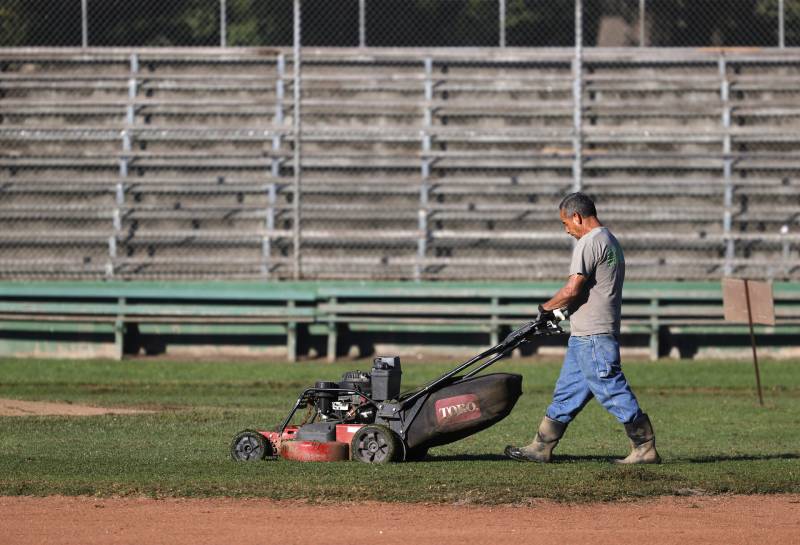People can still use the gas-powered equipment they already own, and stores can still sell their older stock.
Christopher Dilbeck works at the air board and helped design the emissions regulations. “[These tools] actually have more smog-forming emissions than light duty passenger cars in California,” Dilbeck said.
One hour spent clearing a yard with a leaf blower emits the same amount of smog-forming gases as driving 1,100 miles in a standard passenger car, according to the air regulator. That would be like driving from Los Angeles to Denver.
Specifically, the gas-powered engines produce particulate matter and ozone. These machines are not major emitters of planet warming gases, although they do produce some carbon dioxide and other greenhouse gases.
Multiple environmental and health organizations supported the bill, while a handful of groups opposed it, including those representing landscapers and equipment manufacturers.
Assemblyman Marc Berman, D-Menlo Park, co-authored the legislation and said it will particularly benefit workers “who face disproportionate health risks from air pollution.” Those risks include exacerbating asthma and heart disease, and causing premature death.
Santa Cruz landscaper Brett Graf owns Habitat Gardens. He says he’s already experienced multiple upsides from using zero-emission tools.
“They’re easier to use. They smell better, they’re not as loud, you’re not breathing in these fumes,” Graf said.
Graf’s tools are plug-ins or battery powered, and he said his clients are open to him charging his batteries from their outlets while he works.
California’s new law is coupled with $30 million in incentives for people to buy zero-emission equipment, meant to aid an equitable transition.
But some landscape professionals fear that the transition won’t be equitable or smooth.
Daniel Martinez Quiróz owns Martinez Landscape, a three-person outfit in the East Bay.
“This quick transition is a huge change for us and it’s catching us by surprise,” Martinez Quiróz said.
“It’s going to be a bit more difficult for us to compete, because we have to buy new equipment and that will bring our costs up,” he added. “It’s going to have a big impact on contractors, as well as on clients.”
Sandra Giarde is the executive director of the California Landscape Contractors Association. She says the group surveyed its members and found that the landscapers who most often use electric equipment service wealthier communities.
“How is this [law] going to impact the rest of the communities?” Giarde asked.
State regulators point to the availability of battery-powered and plug-in alternatives for commonly used landscaping tools.
Those tools will work fine for personal and residential use, Giarde says, but the equipment isn’t up to the job required by commercial landscapers: slogging from site to site for six to eight hours each day.
“We want to use this equipment,” Giarde said. “It’s not there yet.”
Jason Barbose of the Union of Concerned Scientists said that may be true “but that’s sort of the whole point of the regulation.”
“We’re going to put standards out there,” he said. “It may not be achievable today, but that the state determines they can be met.”
He says the law is an important step for California as it moves away from fossil fuels.

